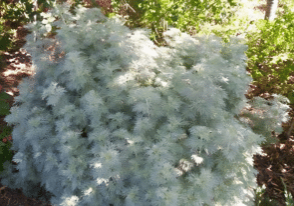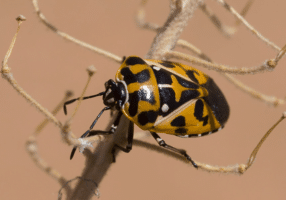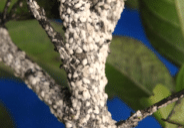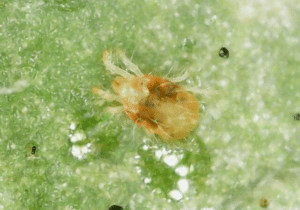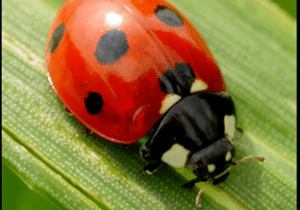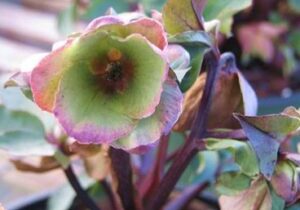By Steve Pulliam


Mistletoe, often associated with nostalgic holiday festivities and romantic traditions, harbors a darker side that is often overlooked. While it may be a symbol of love and joy during the winter season, mistletoe can pose a serious threat to the health and vitality of trees and shrubs. According to the Audubon Society, there are about 1300 species of mistletoe – 33 are native to the United States.
Mistletoe is a parasitic plant that literally grafts itself into a host plant by penetrating its stems or branches with specialized structures called haustoria. Once a connection is made, it begins to extract water, nutrients, and carbohydrates from the host tree, gradually sapping its vitality, (see photo 2 where a mistletoe plant has grafted itself into the stem of an oak branch). Once a single mistletoe plant has become established, it can–with the help of birds–spread rapidly to the rest of the tree/shrub (see photo 1 below), as well as neighboring trees.
Birds feed upon the whitish semi-translucent berries which contain seeds suspended in a sticky gel-like substance which adheres to the bird’s beaks. As they scuttle from branch to branch, they transport the seeds in their droppings as well as their beaks.
- Weakening of Host Trees: Mistletoe weakens trees by drawing essential nutrients away from them. This can result in stunted growth, reduced vigor, and an overall decline in the health of the affected tree.
- Increased Vulnerability to Pests and Diseases: Infected trees become more susceptible to pests and diseases. The stress induced by mistletoe weakens the tree's natural defenses, making it an easy target for various harmful agents that can further compromise its well-being
- Structural Damage: As mistletoe spreads within the host tree, it can cause structural damage by creating abnormal growth patterns. This can lead to weakened branches and an increased risk of breakage during storms or adverse weather conditions.
- Reduced Reproductuve Success: Mistletoe infestations can interfere with a tree's reproductive capabilities. By diverting resources away from the production of seeds and fruits, mistletoe disrupts the natural reproductive cycle of the host tree, impacting its ability to regenerate.
Management and Control:
Addressing mistletoe infestations is crucial to preserving the health of affected trees. Pruning is a common method used to control mistletoe, involving the removal of part or all of the infected branch(es). However, it's essential to note that pruning alone may not be sufficient, and additional measures such as chemical treatments may be necessary for effective control.
Recognizing the potential harm mistletoe can cause to trees emphasizes the importance of proper management and control measures. If you discover mistletoe in a tree, it is important that a remedy be determined as quickly as possible before it becomes a much larger problem for you and your neighbors.

